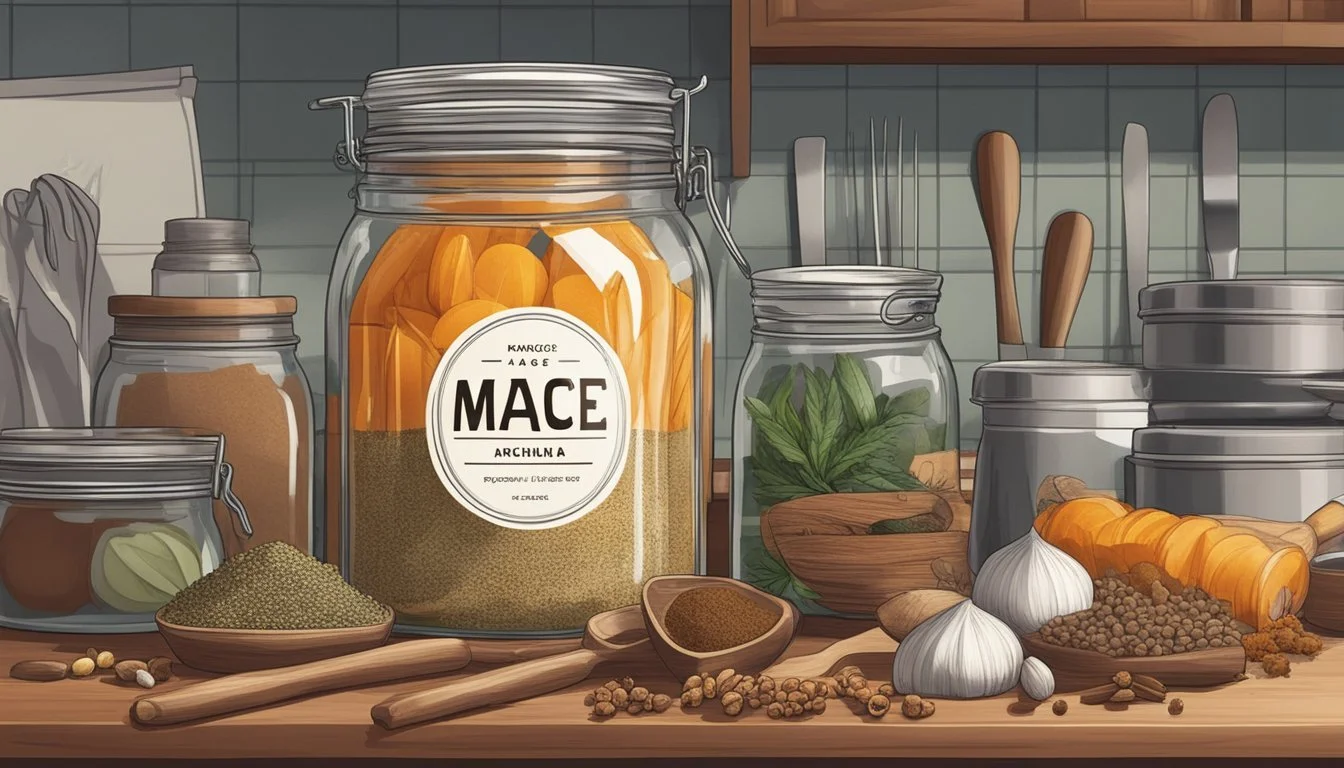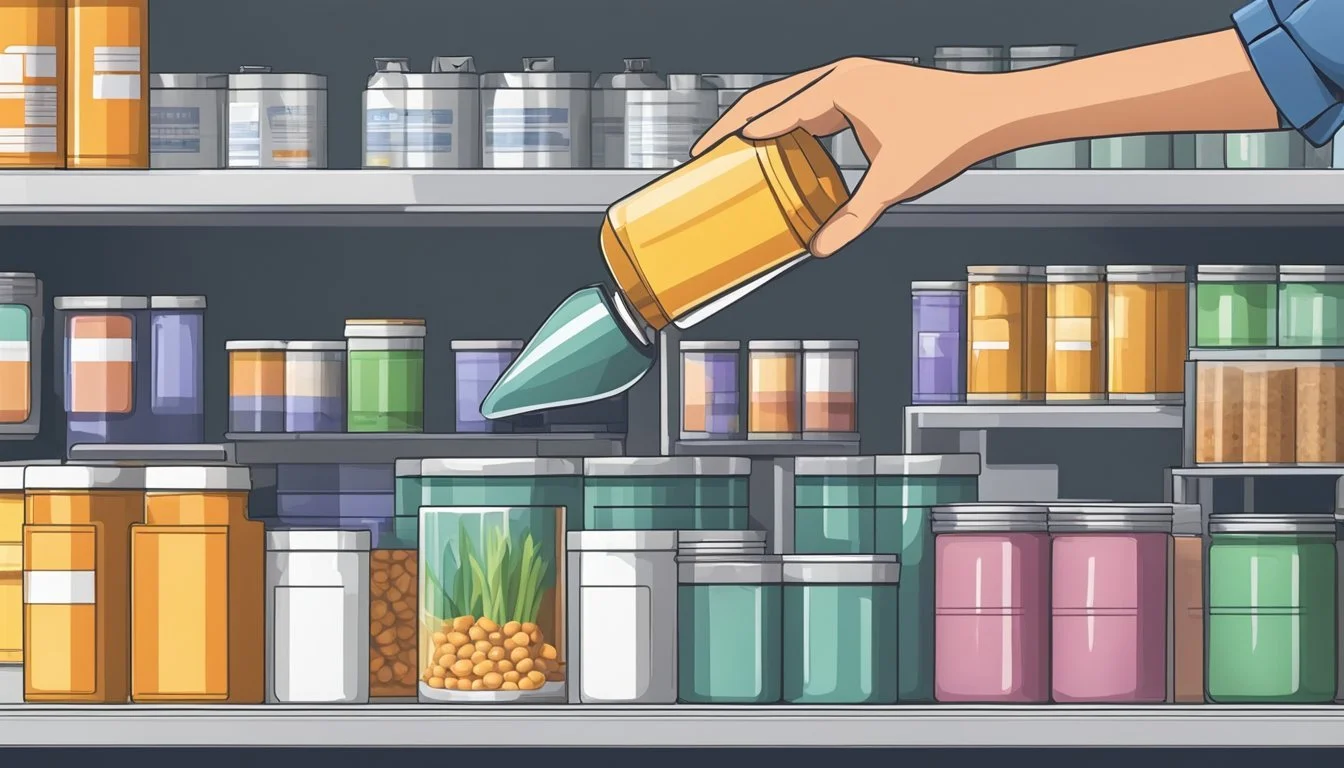Does Mace Go Bad? Understanding Shelf Life and Storage Tips
Wondering if mace goes bad over time? Yes, mace does expire, and its potency diminishes with age. For those using mace as a spice, retaining its quality, flavor, and aroma is crucial. Proper storage in cool, dark, and dry conditions can significantly extend its shelf life, allowing whole mace to last up to 4 years and ground mace a bit less.
When it comes to self-defense tools like pepper spray, periodic testing is recommended to ensure effectiveness. Rotating your canister every few months helps maintain optimal performance, yet frequent tests mean fewer contents in the canister. Adhering to the expiration date can be lifesaving in critical situations.
Both culinary and self-defense uses of mace depend heavily on maintaining quality. Understanding these factors can help you make informed choices, whether it's about cooking a flavorful dish or ensuring personal safety.
Understanding Mace
Mace is an intriguing substance with versatile applications ranging from culinary uses to personal defense. It can be found in various forms, each serving a unique purpose and having specific storage considerations.
Culinary Mace vs. Pepper Spray
Mace in the culinary world is a spice made from the outer covering of nutmeg seeds. This spice, known for its aromatic and slightly nutty flavor, is used in various dishes for both sweet and savory recipes.
On the other hand, mace pepper spray is a self-defense product containing oleoresin capsicum, an extract derived from chili peppers. The key active component in pepper spray is capsaicin, which causes a burning sensation, incapacitating potential attackers. These two forms of mace are markedly different in use and chemical composition.
Historical and Modern Uses
Culinary mace has a rich history, particularly in European and Asian cuisines. It has been used in traditional recipes for centuries, valued for its distinctive flavor and ability to enhance both taste and aroma in dishes like soups, sauces, and baked goods.
In modern times, mace has also found an essential role in self-defense. Mace pepper spray, developed initially for military and law enforcement, is now widely available for personal use. It offers an effective means of protection in dangerous situations, making it a popular choice for those seeking personal safety tools.
Active Ingredients and Properties
The active ingredients of culinary mace and pepper spray are crucial to their functionality. Culinary mace contains various essential oils that contribute to its flavor and aromatic properties. These oils are what make the spice a sought-after ingredient in cooking.
In contrast, mace pepper spray relies on oleoresin capsicum, with capsaicin being the potent component. This compound targets the sensory nerves, causing an immediate burning sensation and temporary blindness when sprayed in the eyes. Understanding these differences is vital for properly handling and storing each type of mace to maintain their effectiveness and safety.
Shelf Life and Degradation
Mace, whether whole or ground, has a varied shelf life depending on storage conditions. Factors such as light, heat, and humidity affect its potency. Identifying signs of degradation like loss of aroma and potency is crucial. Using expired mace can have safety implications.
Factors Affecting Mace Potency
Storage Conditions: The shelf life of whole mace can extend up to 4 years in ideal conditions. Ground mace generally retains its flavor for around 1 to 2 years. Keeping mace in a cool, dark, and dry place is critical.
Exposure to Elements: Light, heat, and moisture can accelerate the degradation process. Mace stored in transparent containers or in areas with significant temperature fluctuations will lose its potency faster. Airtight containers are recommended to minimize air exposure.
Indicators of Quality Loss
Aroma: Fresh mace has a robust and distinctive aroma. A stale or musty smell indicates quality loss. Over time, the essential oils in mace dissipate, reducing its characteristic scent.
Flavor and Color: Loss of flavor and a dull appearance are primary indicators that mace has gone bad. Ground mace, in particular, will lose its potent flavor more quickly than whole mace due to its larger surface area.
Packaging: Inspect containers for any signs of moisture or contamination. Even unopened mace can degrade if it absorbs air and moisture through partially sealed packaging.
Safety Considerations for Expired Mace
Consumption Risks: While consuming expired mace is unlikely to cause serious harm, it will not provide the desired flavor or aroma. In more extreme cases, if mold or other contaminants are present, it may cause minor digestive issues.
Optimal Use: It is advisable to rotate stock and use mace within its optimal shelf life. Labeling storage containers with purchase dates helps track freshness.
Discarding Expired Mace: If mace displays any signs of spoilage or has been stored improperly, it's best to replace it. Using high-quality, fresh mace ensures both safety and the intended culinary results.
Proper Storage Methods
Proper storage methods for mace ensure its longevity and efficacy. Below are detailed guidelines for storing both spice mace and mace pepper spray to maintain their quality and effectiveness.
Ideal Storage Conditions for Spice Mace
Spice mace should be stored in a cool, dark place. Exposure to light, heat, and moisture can reduce its shelf life and flavor. Airtight containers are essential to prevent moisture from getting in and to preserve the spice’s aroma and potency.
Keeping mace at room temperature is recommended. Avoid placing it near ovens, stoves, or other heat sources. Using jars with tight-fitting lids helps maintain its freshness. If possible, store whole mace instead of ground, as it lasts longer.
Maintaining the Efficacy of Pepper Spray
Pepper spray, including mace, requires careful storage to remain effective. It should be stored away from extreme temperatures. High temperatures can cause the canister to leak or even burst, while freezing temperatures can reduce its pressure and effectiveness.
Testing the spray periodically ensures it functions properly, but remember that testing reduces the amount of product left in the canister. Store it in a dry, cool place, avoiding direct sunlight. Keeping it in an accessible but safe location ensures it is ready for use when needed.
When to Replace Mace
Identifying the right time to replace mace is crucial for ensuring its effectiveness. Key factors include checking expiration dates and looking out for signs of deterioration.
Expiration Dates and Testing
Mace products typically come with expiration dates printed on the packaging. These dates are essential for knowing when to replace your canister. Mace spray, like many other defense products, generally has a shelf life of 3 to 4 years.
Regular testing is recommended, especially for small containers, such as keychain canisters. Testing every few months can help ensure the spray is still effective. Replacing the container every 12-18 months, especially if tested regularly, ensures reliability. Keeping an eye on expiration dates and conducting tests increases safety.
Signs of Deterioration in Mace
Besides expiration, physical signs of deterioration indicate it’s time to replace mace. Changes in color, consistency, or smell can signal spoilage. A decrease in potency is another warning sign; if the mace does not perform well during testing, replacement is necessary.
Storage conditions also impact mace longevity. Exposure to light, heat, and moisture can degrade the product. Proper storage, such as keeping it in a cool, dark place, helps prolong its effectiveness. Monitoring for these signs helps maintain the reliability of your mace.
Culinary Applications
Mace is a versatile spice used in various dishes to enhance flavor and aroma. This section details how to incorporate mace into your recipes and how to substitute it if needed.
Incorporating Mace in Recipes
Fresh and ground mace can both be used to add a distinct flavor to dishes. Whole mace is often used in stews, soups, and sauces, providing a subtle yet complex taste profile. Ground mace is commonly featured in baked goods like cakes and cookies, delivering a warm and aromatic essence similar to that of nutmeg.
Spice blends often include mace to enhance the savoriness of the mix. For example, it is a key ingredient in garam masala and can be used to flavor various savory dishes, from roasts to marinades. Using mace in custards, puddings, and even beverages like mulled wine adds depth and a hint of sweetness.
Substituting Mace in Cooking
If mace is unavailable, nutmeg is the best substitute, as both come from the same seed. Nutmeg provides a slightly stronger and more pungent flavor but works well in most recipes where mace is called for. Use a 1:1 ratio when substituting nutmeg for mace.
For those who do not have nutmeg, cinnamon or allspice can be secondary substitutes. They offer a different flavor profile but still contribute to the recipe's overall taste and warmth. Due to its unique aroma and complexity, it’s challenging to find a perfect replacement, so bear in mind the variation in flavor when using these substitutes.
Alternative Uses and Considerations
Mace is typically associated with its spicy, aromatic qualities used in culinary contexts. However, it also has notable applications in self-defense and as an inflammatory agent.
Mace for Self-Defense
Mace, often confused with pepper spray, is a well-known defense tool. It is designed to incapacitate an attacker temporarily. By causing severe pain, eye irritation, and even temporary blindness, it provides a critical window for escape in emergencies.
Different formats include sprays, gels, and streams, each tailored for specific target engagement scenarios. The primary active ingredient in mace is capsaicin, the compound responsible for the heat level, often measured in Scoville heat units. Bear mace is one of the strongest forms available, capable of stopping large animals.
When using mace, the spray mechanism often involves pressurization. Aim for the attacker's face and eyes to maximize discomfort and incapacitation. Always exercise caution and be aware of the wind direction to avoid self-exposure.
Mace as an Inflammatory Agent
In a non-self-defense context, mace acts as a potent inflammatory agent. Its main component, capsaicin, is also what makes hot peppers cause a burning sensation. When mace is dispersed in an area, it can spread the irritant effectively, leading to discomfort and irritation of the eyes and respiratory system.
Historically, similar compounds have been used as tear gas in crowd control situations. The pressurized delivery system ensures that the agent spreads quickly and covers a target area efficiently.
The inflammatory response is immediate, causing the tear ducts to react, and the respiratory system to expel the irritant through coughing. Adequate water, fresh air, and avoiding rubbing affected areas are crucial in mitigating the symptoms quickly.
Purchasing and Handling
When buying and managing mace, there are important factors to consider to ensure its quality and safety. Selecting fresh, high-quality products and adhering to safe handling practices can preserve the spice's flavor and effectiveness.
Selecting High-Quality Mace Products
When selecting mace, look for vibrant colors, indicating freshness and potency. Mace should be bright orange or red; faded colors suggest the spice may be old. Trusted brands usually ensure higher quality, so consider products from well-known manufacturers.
Packaging is crucial as well. Opt for mace in airtight containers to maintain freshness. Bulk purchases should only be considered if you can store the spice properly. Poor packaging can expose mace to moisture and air, reducing its shelf life and quality.
Handling and Safety Precautions
Proper handling of mace ensures it remains safe and effective. Always store mace in a cool, dry place away from direct sunlight. Use containers with tight-fitting lids to protect the spice from moisture.
For safety, avoid using expired mace, especially when the spice shows signs of spoilage, such as off smells or altered appearance. While it’s rare, consuming spoiled mace can cause digestive issues. Regularly check storage conditions to ensure the spice retains its best quality.
Handle mace with clean, dry hands or use utensils to prevent contamination. Proper care and storage practices will maintain the flavor, potency, and safety of your mace supply.








